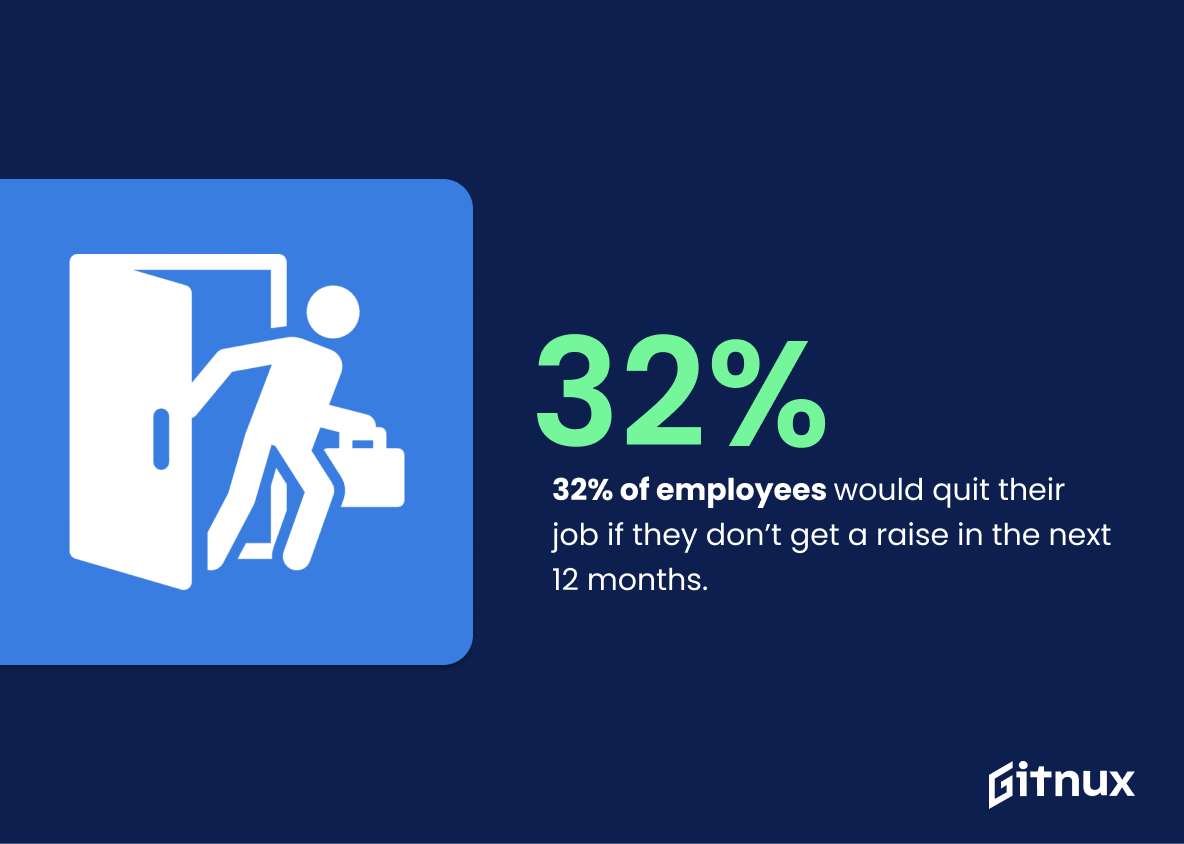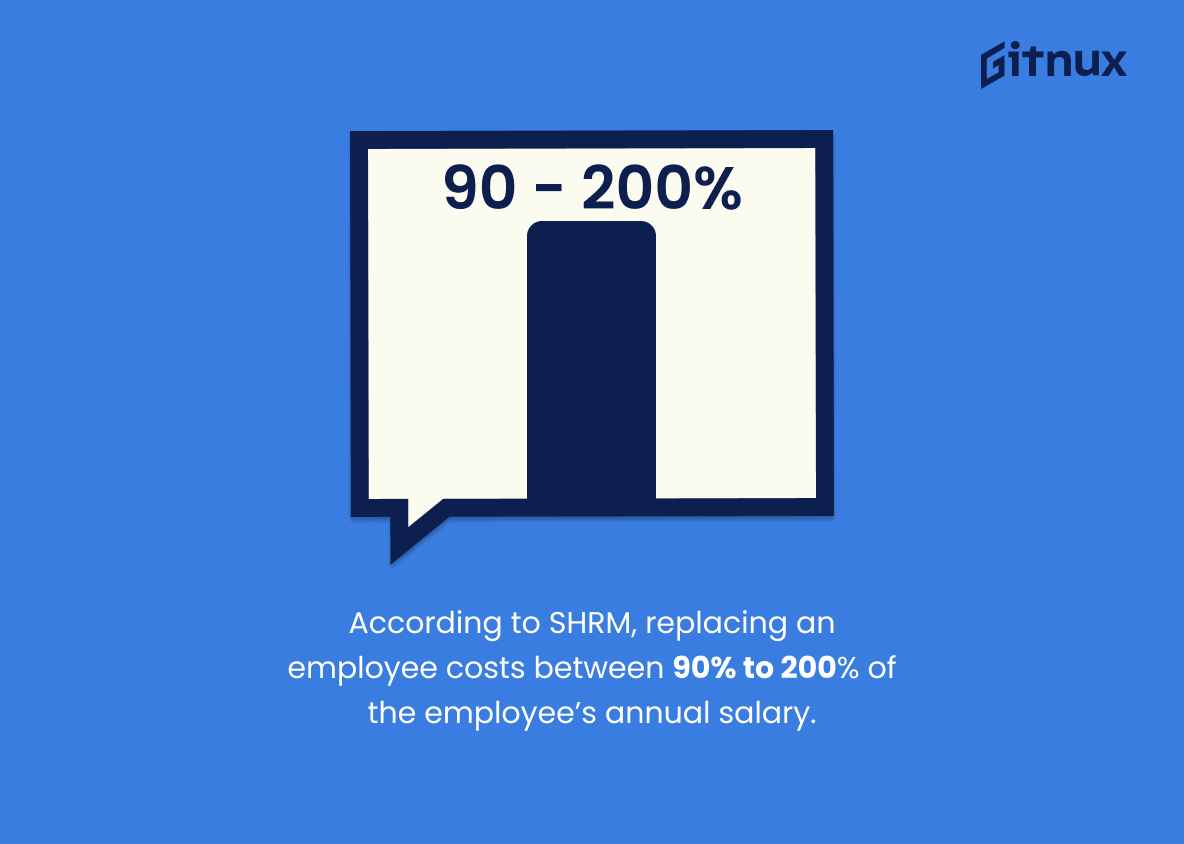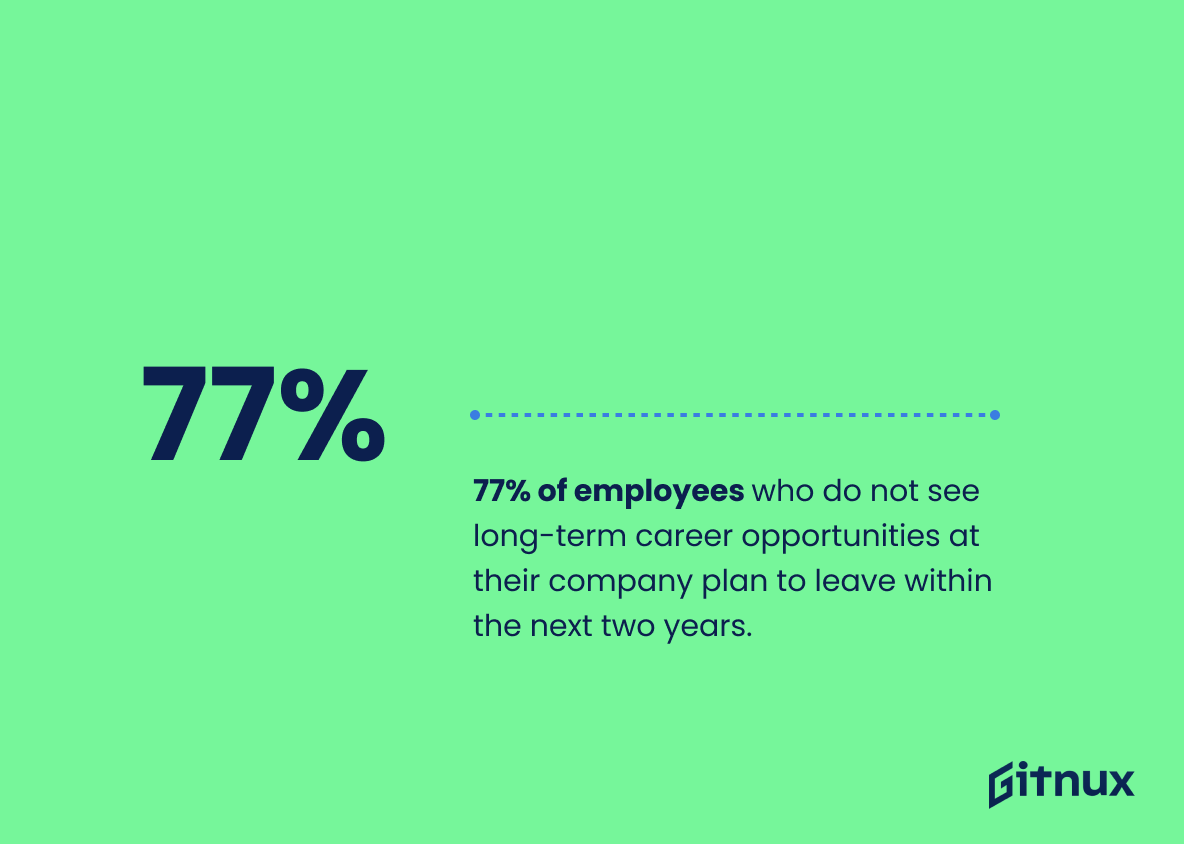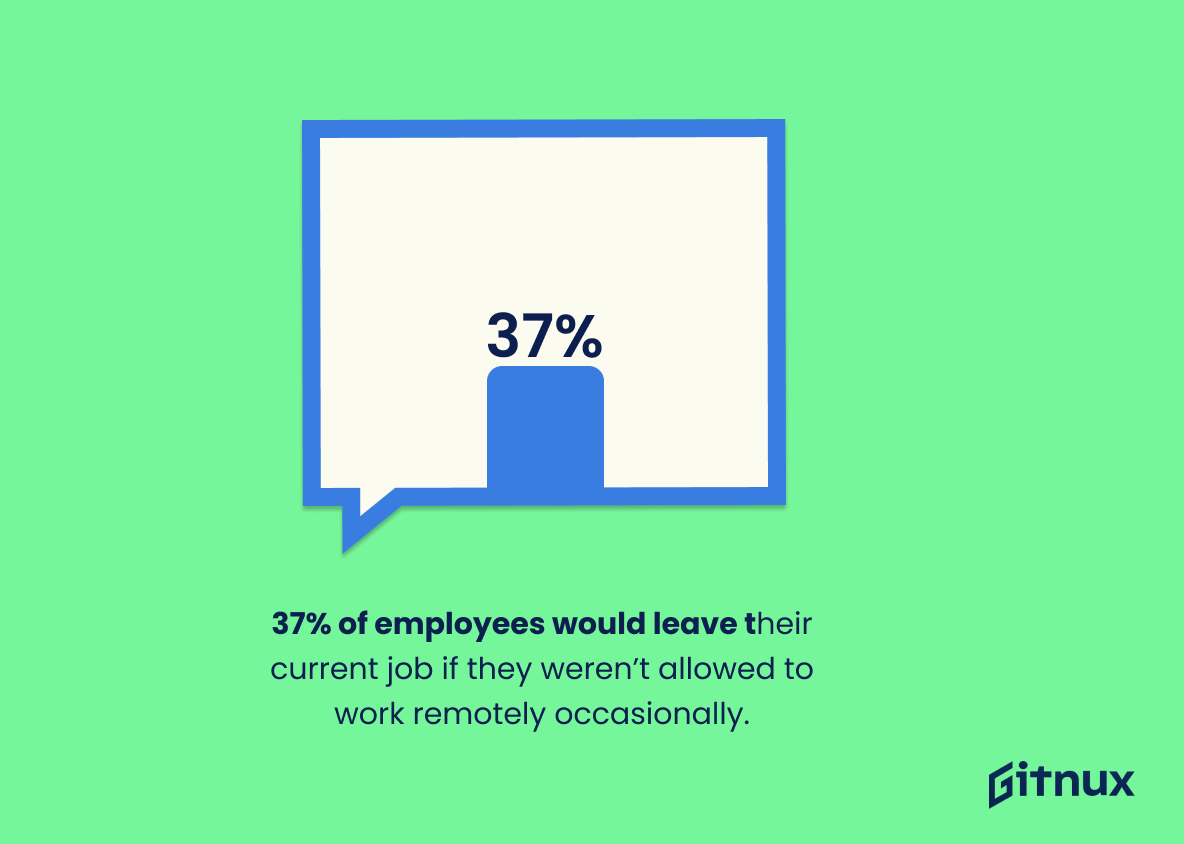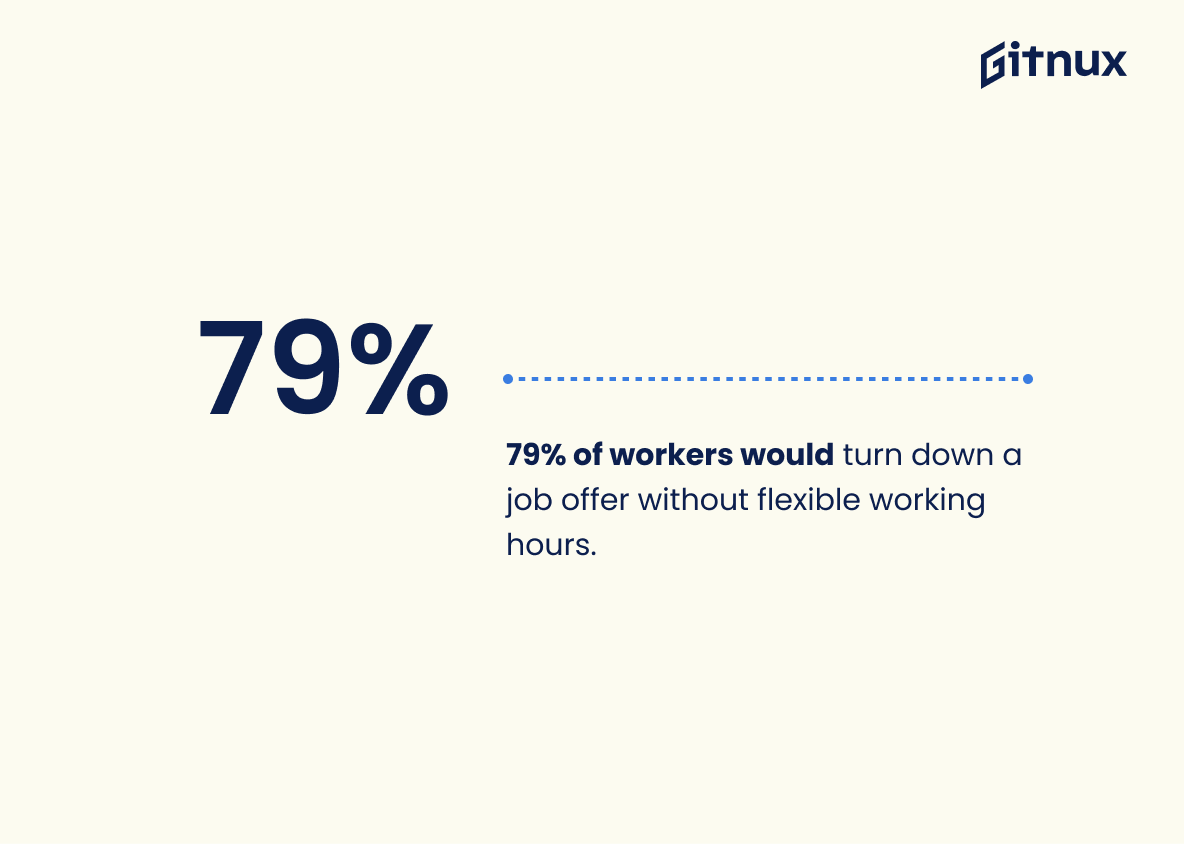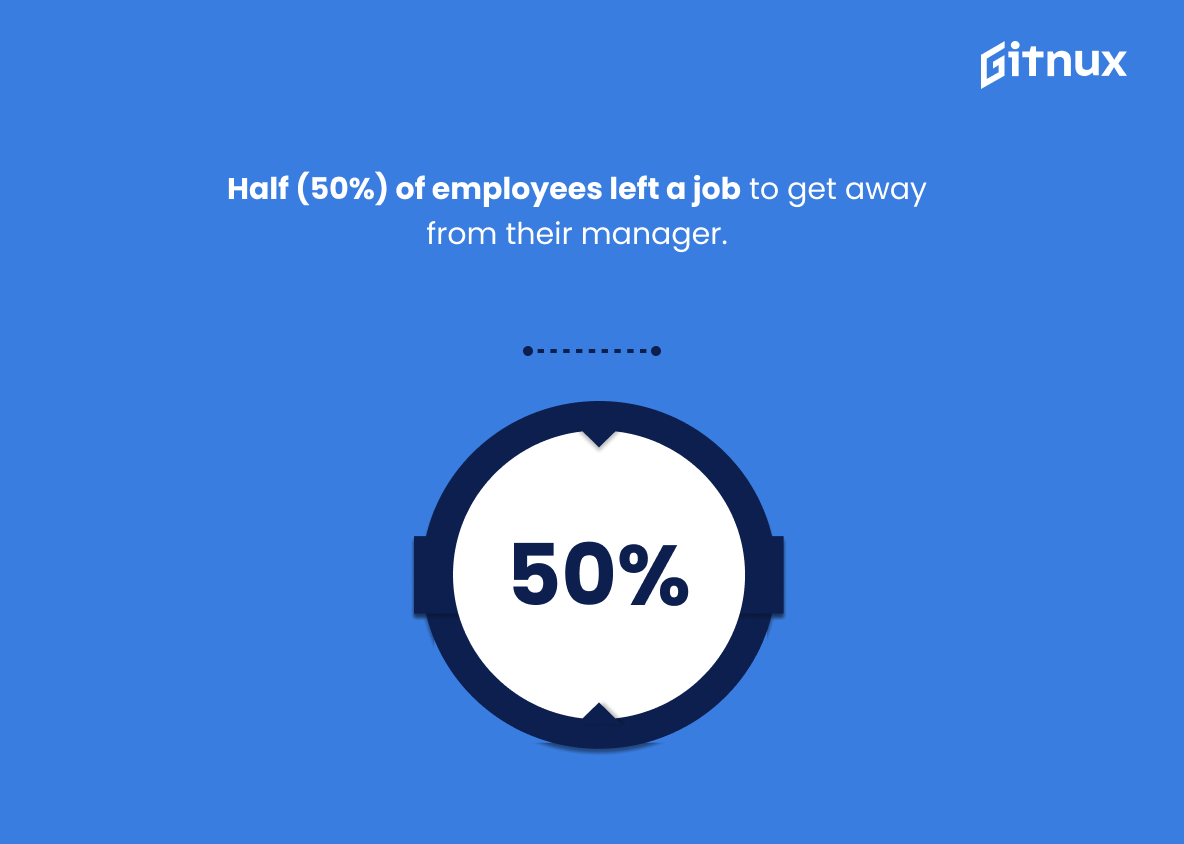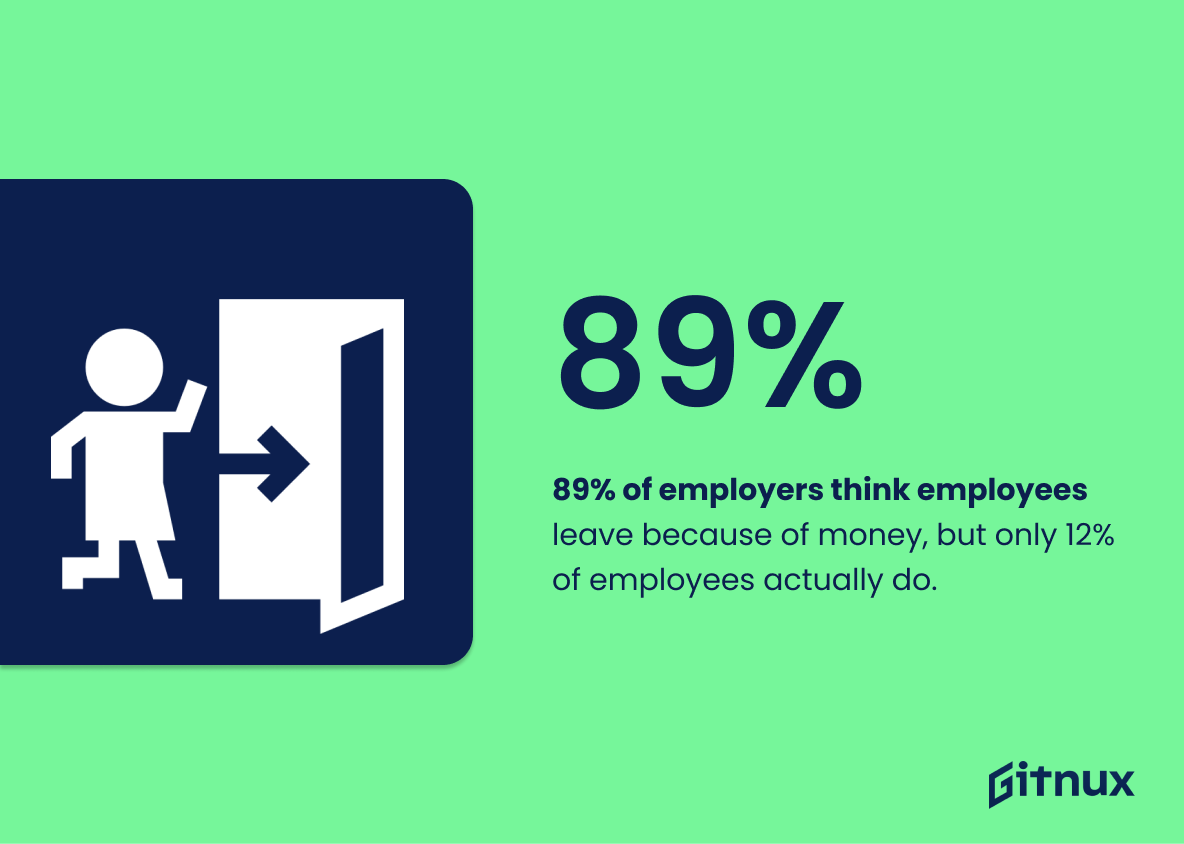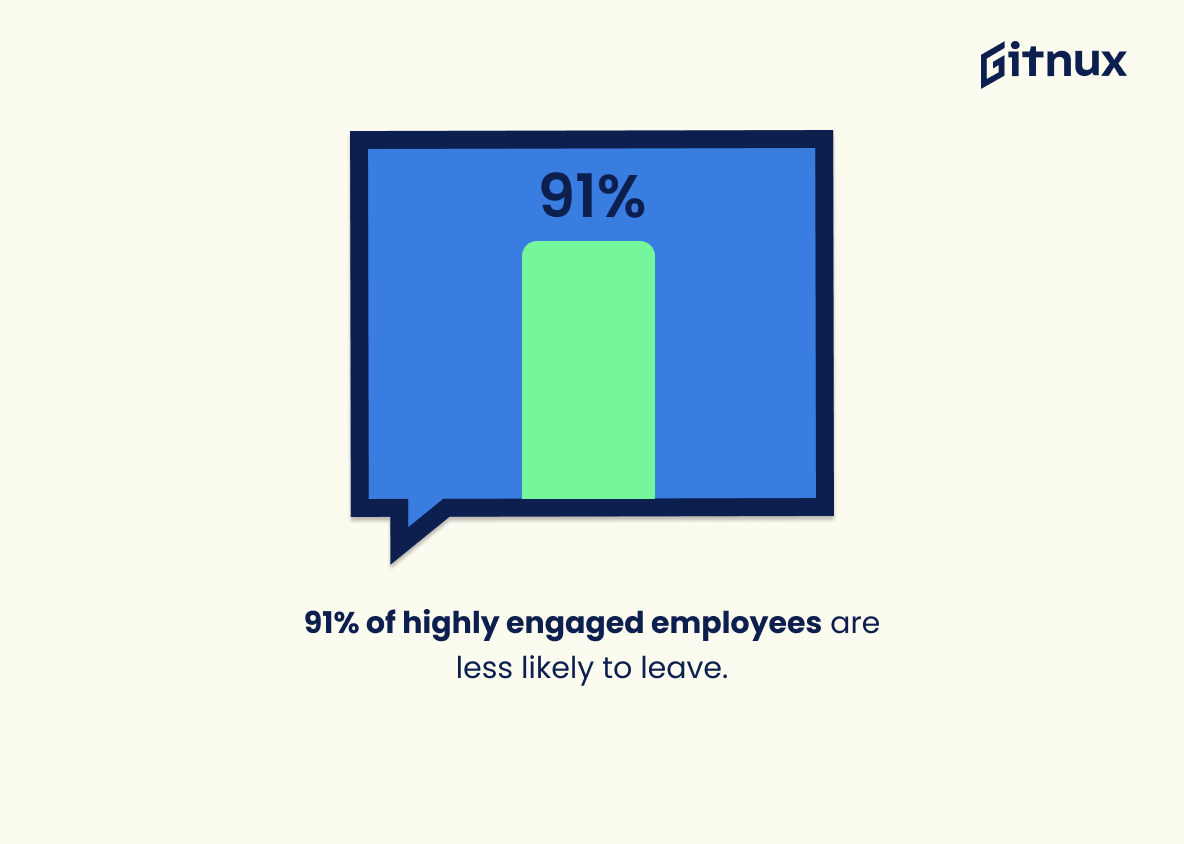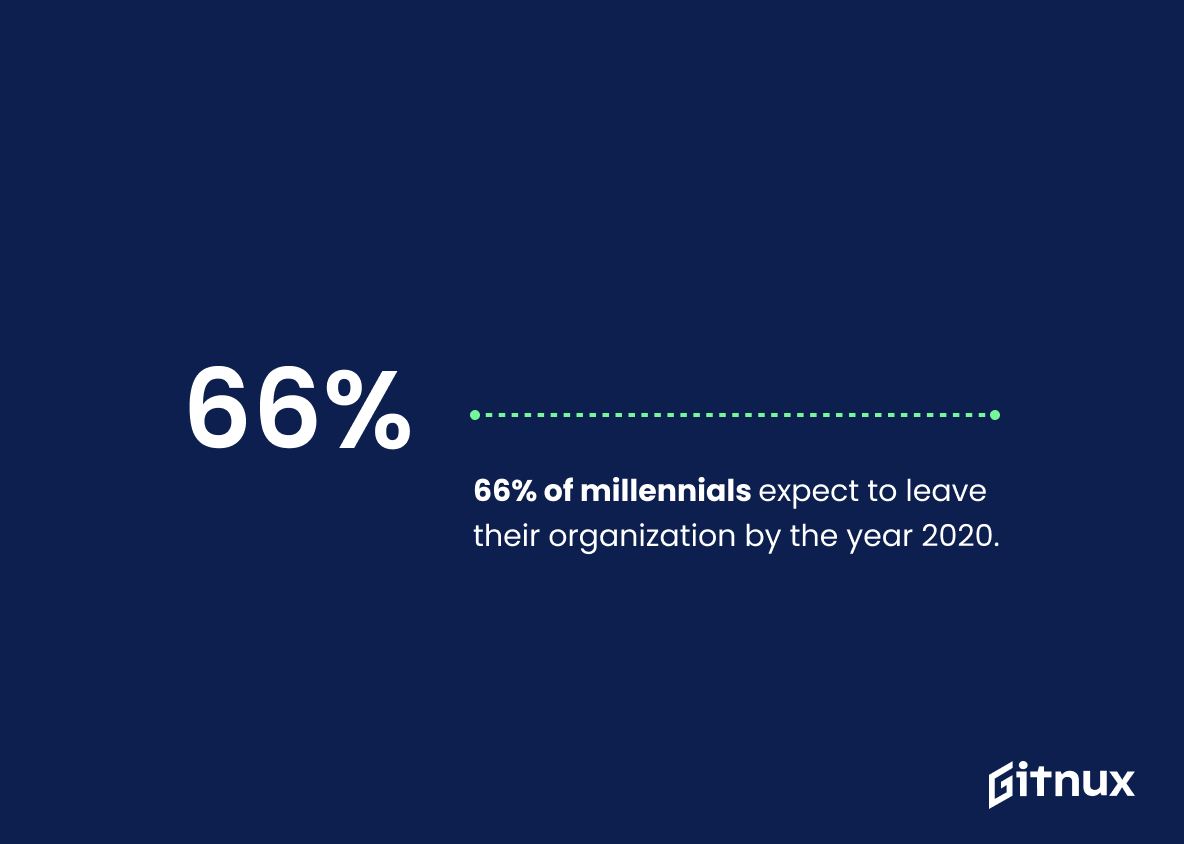In the dynamic world of business, the ability to maintain a robust and committed workforce can significantly determine a company’s success. High employee turnover can negatively impact overall productivity, morale, and financial stability. This is why understanding Employee Retention Statistics has become paramount for HR professionals and business leaders alike. In this enlightening blog post, we delve deep into the critical numbers surrounding employee retention, capturing the facts necessary to inform your retention strategies. Let’s explore the world behind the figures, understanding how they could shape your organization’s future, while enhancing profitability and fostering a powerhouse team.
The Latest Employee Retention Statistics Unveiled
32% of employees would quit their job if they don’t get a raise in the next 12 months.
In the grand scheme of Employee Retention Statistics, the assertion that 32% of employees would wave goodbye to their job if their paycheck doesn’t increase within a year wraps an alarm bell around employers’ necks. It paints an intense, numerical portrait of the direct link between pay hikes and talent retention, shedding light on the underlying employee mindset. It emphasizes the significance of fair financial appreciation for the workforce, as the risk of losing nearly one-third of employees—a substantial part of any organization—due to salary concerns could echo ominously in the corridors of corporate strategy and planning. This statistic serves as a wake-up call to businesses to recalibrate their reward systems, to avoid seeing a constant revolving door of staff departures and recruitments.
According to SHRM, replacing an employee costs between 90% to 200% of the employee’s annual salary.
Grasping the SHRM revelation that employee turnover can cost a company anywhere from 90% to 200% of the person’s annual salary, profoundly underscores the importance of employee retention. It uncovers new dimensions of financial impact, reminding us that when an employee exits, they don’t just take their services, which can be quickly replaced. Instead, the incurred costs are extensive and multifaceted. For a business to ensure growth and stability, focusing on maintaining staff becomes necessary. This precious knowledge powers the narrative of our blog post on employee retention statistics, painting a more detailed picture of the correlation between retaining staff and fiscal health.
77% of employees who do not see long-term career opportunities at their company plan to leave within the next two years.
Interpreting the significance of the statistical data indicating that 77% of employees who do not see long-term career prospects at their current company plan to depart within the next two years, may serve as a wake-up call in the discourse about Employee Retention. Notably, in the fast-paced, intellectually competitive work environment of modern times, a sense of future stability and progress are decisive factors determining an employee’s commitment to their organization. This statistic lays the facts bare, delivering a critical message to leaders and management about the crucial role of personal growth and developmental opportunities in retaining workforce talent. Delving deeper into this revelation, it becomes clear that maintaining employee satisfaction extends beyond just immediate perks and benefits—it’s an investment into the future of the employees, consequently ushering in continuity and consistency within the organization.
57% of organizations view employee retention as a problem.
Painting a landscape of the contemporary workplace, this statistic serves as a vibrant, undeniable splash of color: 57% of organizations identify employee retention as a significant challenge. This figure underscores the undeniable gravity of the issue, lifting it from just a minor concern to a widespread corporate phenomenon. Weaving this into a blog post about Employee Retention Statistics would offer an insightful benchmark, drawing a clear line in the sand for readers to understand just how pervasive, and potentially disruptive, poor employee retention can be. Unlike a faceless issue, this statistic gives the problem a quantifiable dimension, a pulse. As if peering through a corporate looking glass, readers can comprehend the scale of the struggle against the tide of employee attrition and its perturbing effects on organisational well-being.
75% of the causes of employee turnover are preventable.
The captivating statistic ‘75% of the causes of employee turnover are preventable’ offers a flamboyant pivot point in our discussion on Employee Retention Statistics. It dramatically sheds light on the power and impact an organization can have on retaining its staff. This potent figure prompts an imagining where most employees, in their company of choice, carry on passionately contributing, instead of heading for the exit. This realization can galvanize leaders to ignite proactive retention strategies, debunking the myth of employee turnover as an inevitable business casualty. Penetratively presented, this statistic offers hope and direction towards an attainable transformation in the corporate landscapes of retention and turnover.
Companies that support remote work have 25% lower employee turnover than companies that don’t.
Painting a striking picture on the broad canvas of employee retention, this particular statistic reiterates the growing relevance of remote work in today’s business landscape. It speaks volumes about how flexibility can serve as a catalyst in preserving a company’s greatest asset— its human resources. Anchoring the narrative in solid numbers, this 25% difference in employee turnover, between companies embracing remote work versus those that do not, resonates with the reality of modern work culture. This statistic undeniably illuminates the correlation between remote work policies and longevity of tenure, thereby making it an integral component of any discourse centered around employee retention statistics.
37% of employees would leave their current job if they weren’t allowed to work remotely occasionally.
Painting an insight with numbers, the cited statistic reveals a compelling nexus between the flexibility of remote work and employees’ commitment to their job. Delving into the layers of this data, it dramatically underlines the fact that a non-trivial 37% of the workforce prioritizes occasionally working remotely. This potent piece of information stands as a silent alarm for companies around the world, highlighting the crucial role that remote work options now play in retaining skilled employees. By weaving this statistic into a blog post about Employee Retention Statistics, it serves not only as a cautionary tale to businesses insisting on conventional work set-ups but also a roadmap guiding companies towards more retainable employment strategies.
79% of workers would turn down a job offer without flexible working hours.
Diving into the depths of this intriguing statistic, we find a vivid reflection of the modern workforce landscape; “79% of workers would turn down a job offer without flexible working hours.” Under the umbrella of Employee Retention, the crux of this percentage becomes evident.
Imagine this: A majority of the workforce- close to four out of five individuals- hinge their job decisions not just on the gravitational pull of an attractive salary or an appealing role, but on the dynamism of working hours. As one leafs through the chapters of Employee Retention, it becomes clear: the 21st century worker seeks balance, flexibility, and autonomy. Failing to provide this could equate to an organization’s slow descent into a retention nightmare.
Hence, any discourse on Employee Retention Statistics would be significantly impoverished without delving into this important statistic; it reflects the vital paradigm shift in how employers can retain talent by valuing personal autonomy and work-hour flexibility as highly as traditional lures like competitive compensation or career progression pathways.
87% of HR leaders say improved retention is a high/critical priority.
Peeling back the layers of this statistic reveals a deeper insight into the heart of contemporary HR strategies. With an astonishing 87% of HR leaders voicing that improved retention is a high or critical priority, it’s crystal clear that companies are recognizing the vitality of employee longevity. This statistic magnifies the need for effective employee retention strategies in the corporate world.
Long-term employees hold a significant edge as they have a profound understanding of their roles and the organization’s culture, leading to a more harmonious and productive workspace. Plus, a lower staff turnover rate spares companies the financial burden of hiring and training new employees frequently.
This figure, 87%, is not something that can be dismissed as a fleeting trend, rather it sheds light on a fundamental shift in the HR landscape — a growing focus on nurturing and retaining existing talent over hiring new staff. This shift translates into more investment in employee satisfaction, engagement, and career development.
In the larger context of a blog post about Employee Retention Statistics, this statistic thus underscores the significance of retention and sets the tone for a thoughtful examination of the efficacy of various employee retention practices.
Half (50%) of employees left a job to get away from their manager.
Stepping into the realm of insightful Employee Retention Statistics, consider the weight of the revelation that a staggering 50% of employees have vacated their positions, not prompted by better opportunities or career growth, but influenced by the desire to evade their current manager. It’s a statistical knockout punch, highlighting the profound influence a manager wields over an employee’s decision to stay or leave. This draws attention to the significance of managerial relationships in the workplace – interpreting not only the importance of hiring competent leaders, but also maintaining an environment where both managers and subordinates can thrive. Thus, it’s a crucial variable to consider when strategizing for employee retention. A silent yet potent reminder – a company’s leadership is its backbone, and when it fractures, the body suffers exponentially.
89% of employers think employees leave because of money, but only 12% of employees actually do.
Delving into the crux of Employee Retention Statistics, a captivating narrative unfolds. A whopping 89% of employers are inclined towards believing that monetary concerns are the prime triggers compelling employees to part ways. Contrastingly, a mere 12% of employees confess to money being their motivator. Now, why does this dichotomy grab attention?
First, it glaringly exposes the disconnection between the perception of employers and the actual reasons the workforce chooses to leave. For any organization yearning for holding onto their talent pool, this misaligned understanding can be a major stumbling block. The misconception that remuneration is the prime igniter in the departure phenomena can lead to misguided retention strategies, pulling the focus away from the real issues.
Second, it plants a flagpost on more pressing subjects that demand immediate attention – such as job satisfaction, opportunities for growth, and healthier work environments. What this statistic essentially underscores is that, rather than financial gain, factors tapping on the overall employee engagement, contentment and career progression pathways are pivotal.
Lastly, it underpins a glaring necessity for organizations to foster improved communication lines, weave in employee feedback in decision-making process and nurture a more empathetic and tailored employee-centric approach. The weight carried by this particular statistic could well prompt a paradigm shift in an organization’s retention strategies.
91% of highly engaged employees are less likely to leave.
In the universe of employee retention statistics, the figure ‘91% of highly engaged employees are less likely to leave’ shines like a North Star, guiding the way. It underscores the powerful relationship between engagement and retention. Picture this – when nearly all, or 91%, of your highly engaged workforce demonstrate a stronger commitment to stay, it serves as a testimony to the magnetic pull of effective employee engagement strategies. It could be equated to a fertile soil that not only nourishes the growth but also anchors the roots firmly, preventing any unwanted ’employee turnover’ storms from uprooting your most valuable assets – your employees. Thus, enhancing engagement might just be the secret ingredient to boost up your retention recipe. Drawing attention to this statistic can be a wake-up call for organizations to direct their resources and energies towards fostering a thriving and engaging work environment. Indeed, in the narrative of employee retention, this statistic is a crucial plot twist that could change the entire story.
66% of millennials expect to leave their organization by the year 2020.
Diving into the nitty-gritty specifics of employee retention statistics, you cannot sideline the striking revelation that up to two-thirds of millennials anticipated cutting ties with their employers by 2020. Now that’s quite a bold assertion to unpack. As we scan these alarmingly high attrition forecasts from a robust demographic, it underlines the increasing unease among younger employees. The statistic under discussion isn’t just a number; it’s a loud wake-up call for organizations. Employee retention trends are not just about the employees that are staying put; they are equally about those poised to exit, such as the restless millennials featured here, underscoring a critical challenge that employers must address promptly. From all outward indicators, it seems organizations need to dig much deeper to unearth and resolve the issues pushing this technologically savvy, ambitious generation away.
Only 28% of employees felt their current employer made effective use of their skills.
In the grand arena of Employee Retention Statistics, the nugget that only 28% of employees believe their current employer effectively harnesses their skills stands as an eye-catching cornerstone. Often, an unraveling tapestry of employee disengagement and high turnover is woven from threads of underutilization. These figures underscore the urgency for organizations to actively recognize and tap into their employees’ potential, highlighting a compelling correlation between skill utilization and employee commitment. In essence, it sends a clarion call to put employees’ proficiencies at the forefront of business strategies, vital for shaping robust retention approaches.
Conclusion
Understanding employee retention statistics is fundamental to cultivating a thriving workplace environment. These numbers shed light on the importance of retaining valuable staff and aiding their growth within your company. Factors such as competitive salaries, career advancement opportunities, solid recognition programs, and maintaining a healthy work-life balance are pivotal in fostering employee loyalty and reducing turnover rates. With the constant transformations in the modern workplace, successful businesses are those that adapt and make continuous efforts in implementing strategies that promote employee retention. Always remember, a happy employee is an asset to any organization, contributing significantly to its success. By recognizing the significance of employee retention statistics, companies can nurture a productive and engaged workforce, ensuring a prosperous future.
References
0. – https://www.www.gallup.com
1. – https://www.www.hrdive.com
2. – https://www.www2.deloitte.com
3. – https://www.fi.co
4. – https://www.www.owllabs.com
5. – https://www.blog.clearcompany.com
6. – https://www.www.forbes.com
7. – https://www.www.talentsoft.com
8. – https://www.www.shrm.org
9. – https://www.growmap.com
10. – https://www.www.kronos.com
11. – https://www.buffer.com
